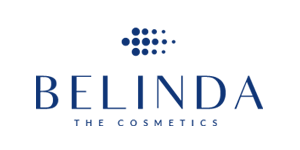CE Certification and CE Marking: Navigating Medical Devices Regulation (EU) 2017/745 Requirements
In the ever-evolving world of medical technology, compliance with Medical Devices Regulation (EU) 2017/745 Requirements is not just a legal obligation but a mark of trust, safety, and quality. Achieving CE Certification for medical devices signifies that a product meets the stringent requirements set by the European Union, allowing it to be marketed within the European Economic Area (EEA). For businesses aiming to expand into these lucrative markets, understanding and meeting these standards is essential. In this guide, we delve into the essentials of CE Certification for medical devices and provide actionable insights into achieving compliance.
What is CE Certification for Medical Devices?
CE Certification, or Conformité Européenne, indicates that a medical device complies with EU safety, health, and environmental protection standards. Under the Medical Devices Regulation (EU) 2017/745 (MDR), all manufacturers intending to sell their devices in the EU must obtain this certification. This regulation ensures that devices are safe for use and perform as intended, fostering confidence among consumers and healthcare professionals.
Why is the Medical Devices Regulation (EU) 2017/745 Important?
The MDR replaced the previous directives to address the growing complexity of medical technologies and ensure higher standards of safety. It introduces stricter requirements for:
Risk management systems
Clinical evaluations
Post-market surveillance
Transparency and traceability of devices
These updates make the CE Mark more than just a symbol; it becomes a testament to a company’s commitment to excellence.
Key Principles of Medical Devices Regulation (EU) 2017/745
Classification of Medical Devices
Under MDR, medical devices are classified into four categories based on their risk level:
Class I: Low-risk devices (e.g., bandages, surgical gloves).
Class IIa: Medium-risk devices (e.g., dental fillings, diagnostic equipment).
Class IIb: Higher-risk devices (e.g., infusion pumps, ventilators).
Class III: High-risk devices (e.g., pacemakers, implants).
Essential Requirements for Compliance
To obtain CE Certification, manufacturers must meet the following core requirements:
Technical Documentation: Comprehensive technical files outlining product specifications and testing results.
Clinical Evaluation: Robust clinical evidence demonstrating safety and efficacy.
Quality Management System (QMS): Implementation of a system such as ISO 13485 to ensure consistent quality.
Post-Market Surveillance: Ongoing monitoring of device performance and safety.
The CE Certification Process for Medical Devices
Achieving CE Certification involves several critical steps:
1. Determine Device Classification
Understanding the device’s classification under MDR is crucial, as it determines the required conformity assessment procedure.
2. Prepare Technical Documentation
Manufacturers must compile a thorough technical file, including:
Product description
Design and manufacturing processes
Risk analysis
Clinical evaluation reports
3. Implement a Quality Management System
Compliance with ISO 13485 ensures that manufacturing processes meet international quality standards.
4. Engage a Notified Body
For higher-risk devices (Classes IIa, IIb, and III), manufacturers must work with an EU Notified Body to conduct audits and assessments.
5. Conduct Clinical Evaluations
Clinical testing must demonstrate that the device is safe, effective, and performs as intended.
6. Declaration of Conformity
Once all requirements are met, manufacturers draft a Declaration of Conformity, a formal statement affirming compliance with MDR.
7. Affix the CE Mark
After successful certification, the CE Mark can be affixed to the device, allowing it to be legally marketed in the EEA.
Industries Benefiting from CE Certification
Medical Equipment Manufacturers: Ensures devices meet EU standards for safety and efficacy.
Healthcare Providers: Confidence in using certified, high-quality equipment.
Exporters: Expands market access to the European Union.
Startups in Medical Technology: Builds credibility and competitive advantage.
Benefits of CE Marking Under MDR
1. Market Access
CE Certification opens doors to 30+ countries within the EEA, providing access to a market of over 500 million consumers.
2. Enhanced Brand Reputation
A CE Mark signifies quality and compliance, instilling trust among customers and stakeholders.
3. Reduced Risk of Non-Compliance
Compliance with MDR minimizes the risk of legal penalties, product recalls, and reputational damage.
4. Competitive Edge
Certified devices stand out in a competitive market, offering assurance of safety and reliability.
Challenges in CE Certification for Medical Devices
While the benefits are clear, the path to certification is not without hurdles:
Stringent Documentation Requirements: Ensuring comprehensive and accurate technical files.
Regulatory Updates: Keeping up with evolving MDR standards.
Clinical Evaluation Complexity: Conducting thorough and unbiased clinical studies.
Partnering with an experienced certification body can streamline this process and ensure success.
Why Partner with Us for CE Certification?
Our team specializes in navigating the complexities of Medical Devices Regulation (EU) 2017/745 Requirements. With years of experience and a commitment to excellence, we provide:
Comprehensive Guidance: From classification to CE Marking.
Tailored Support: Customized solutions for your specific device and market needs.
Expedited Certification: Efficient processes to help you meet your goals faster.
Conclusion
Compliance with Medical Devices Regulation (EU) 2017/745 Requirements is essential for businesses aiming to access the European market and establish their credibility. The CE Mark is more than a regulatory requirement—it’s a badge of trust and quality.
Don’t let the complexity of MDR deter your progress. Contact us today to start your CE Certification process and unlock the potential of your medical devices in the global market!
- Get Your Legal Advice
- All Experts Lawyers
- All Experts Lawyers
- Great Discounted Rates
- Fighting for The Average Joe
- Get The Money You Deserve
- All Experts Lawyers
- Justice For All


Point of View
Our Vision
A lawyer or attorney is a person who practices law, as an advocate, attorney, attorney at law, barrister, barrister-at-law, bar-at-law, civil law notary, counsel, counselor, counselor, counselor at law, solicitor, chartered legal executive, or public servant preparing, interpreting and applying law, but not as a paralegal or charter executive secretary. Working as a lawyer involves the practical application of abstract legal theories and knowledge to solve specific individualized problems, or to advance the interests of those who hire lawyers to perform legal services.

